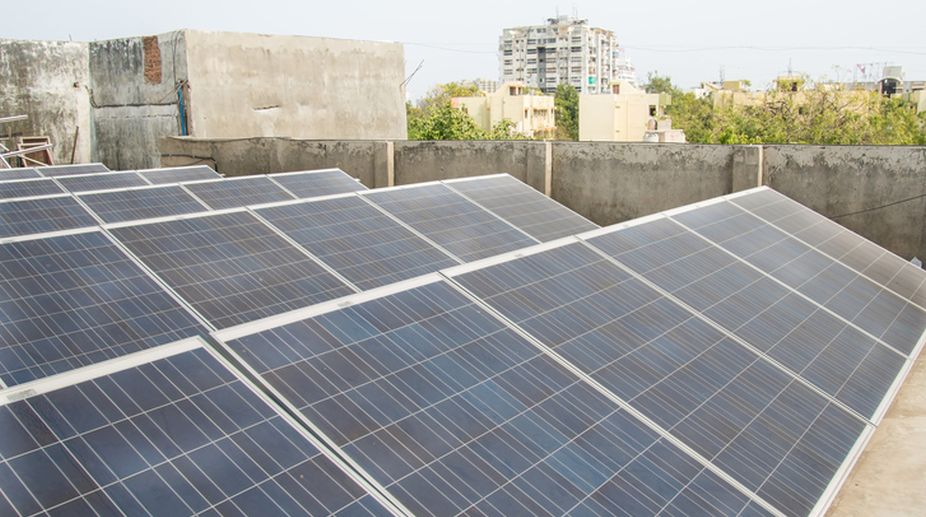J&K CM Omar Abdullah lays stress on Himachal Pradesh-type laws to protect agricultural land
The Chief Minister noted that Himachal Pradesh has adopted a strict policy in this regard and stressed the adoption of a similar policy in J&K.

Representational image (Photo: Getty Images)
After Kerala and Chandigarh, Himachal Pradesh too is mulling to harness clean energy via floating solar plants in reservoirs and dams across the state.
Having two major reservoirs including Govind Sagar Dam (which is the third biggest reservoir in India) and Maharana Pratap Sagar or Pong Dam, the proposed plan could yield desired results for the government.
Advertisement
“Himachal Pradesh has lots of dams and reservoirs which can be utilized for generating solar power on the lines of Kerala government and Chandigarh administration,” MPP and Power minister Anil Sharma told The Statesman.
Advertisement
Sharma said the plan to step up floating solar power plants was discussed in a recently held meeting and the matter would soon be discussed with Central government. The floating solar plant, also termed as floating solar array or floating solar farm, is an array of photovoltaic panel on a structure that floats on a body of water, typically a reservoir or lake.
These plants harness energy in the form of sunlight which is then converted via photovoltaics (PV) into electricity. The efficiency of the solar cells used in a photovoltaic system, in combination with latitude and climate, determines the annual energy output of the system.
The significant improvement of efficiency by 19 percent of solar panels over water has led to the construction of large scale floating solar farms in China, India, the United Kingdom, and Japan.
In addition to water volume retention, floating solar plants provide additional water quality benefits, of particular benefit to potable water infrastructure management.
By shading water, floating solar farms also inhibit the growth of water weeds (that require sunlight for photosynthesis) and the growth of bacteria, such as giardia and cryptosporidium, is also restricted by water temperature reduction.
It is worthwhile to mention here that GobindSagar reservoir, a man-made lake on the Sutlej River at Bilaspur district, is the third largest reservoir in the country and it formed by the tallest hydel dam, Bhakra.
The GobindSagar Lake has an water reservoir capacity of 75.01 lakh acre ft and it is spread across an area of 168.35 sq km.
While the Pong Reservoir, also known as MaharanaPratapSagar, is another lake on Beas River in Kangra district and one of the well-known wildlife sanctuary.
The reservoir covers an area of 24,529 hectares (60,610 acres) and it has an surface area of 240 sq km.
The other dams include Pandoh Dam in Mandi district, Nathpa-Jhakri Dam in Shimla and Kinnaur districts and Chamera Dam in Chamba district.
Advertisement